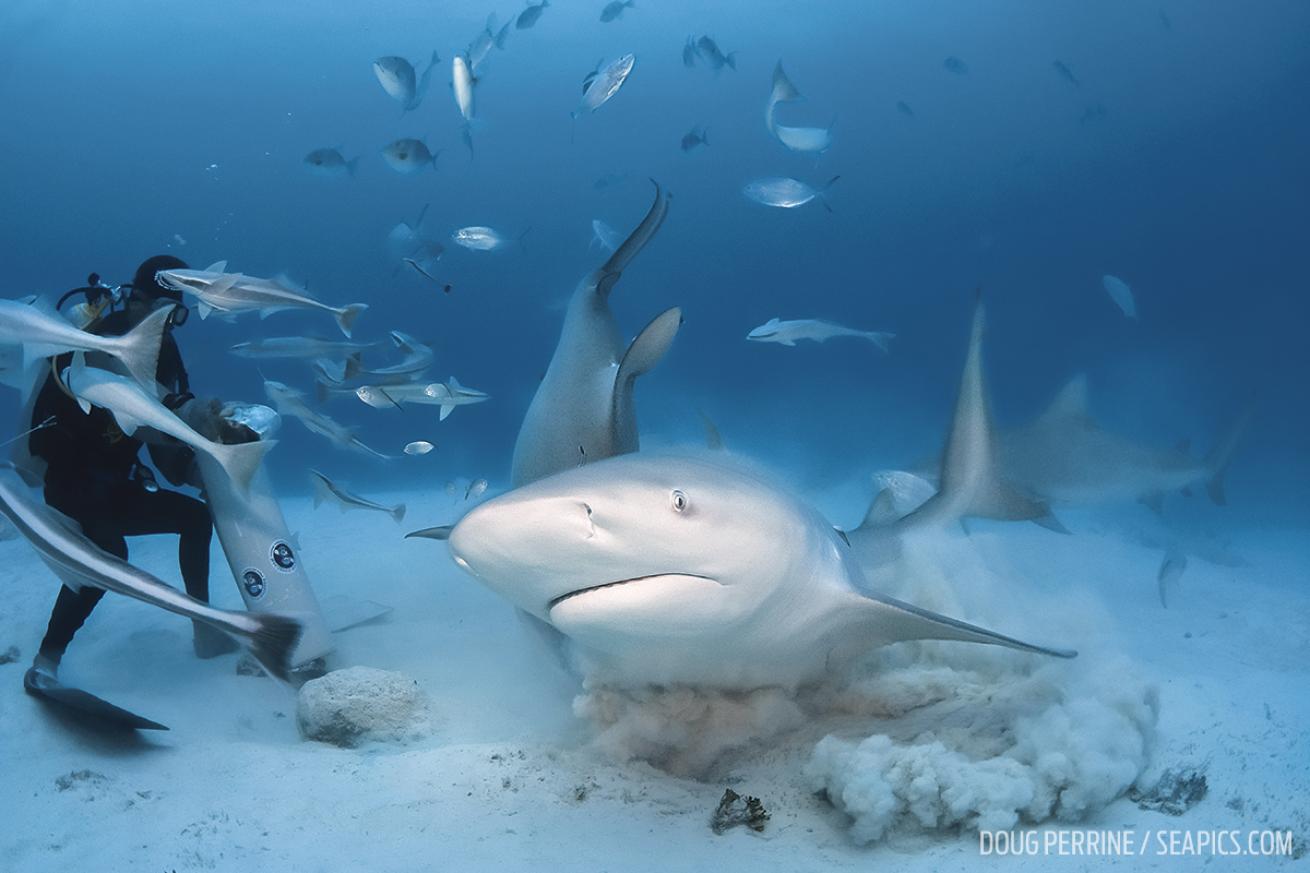Scuba Diving with Bull Sharks in Playa del Carmen, Mexico

Doug PerrineBULL SHARKS
There is beauty in the danger associated with these apex predators, but diving with the pit bulls of the sea might change your way of thinking.
Facts About Bull Sharks and Where to Dive with Them
Despite what Jaws has done to stereotype sharks, these apex predators come in all shapes and sizes.
Of the more than 400 species of sharks that exist, only a handful have the typecast size, strength and predatory instincts that get divers’ hearts pounding. Great whites, hammerheads and tigers fit that bill, sure, but one species that is perhaps most thrilling of all is the bull shark.
Bulls might not be bus-size behemoths — they normally grow between 7 and 11 feet long — but they can absolutely hold their own against their bigger brethren. They’re built like pit bulls: stocky and muscular, with big barrel chests. Like a silvertip shark on steroids, bull sharks (Carcharhinus leucas) have quite the reputation for being short-tempered. They are considered one of the most aggressive and dangerous sharks in the ocean, accounting for the majority of shark attacks on humans every year. Though it should be noted that household items like toilets cause more deaths than shark attacks by any species combined.
While bull sharks can be quite aggressive hunters, the reason they are the prime culprits in shark attacks has more to do with their habitats than their personalities. They live all over the world and mainly hang out in shallow, murky waters near the beach. Not surprisingly, their real estate preferences mean swimmers, surfers and beachgoers are far more likely to encounter a bull shark than an oceangoing great white.

ShutterstockFACTS ABOUT BULL SHARKS
Max Length: Up to 11 feet
Max Weight: Between 200-500 pounds
Life Span: 13-17 years
Status: Near threatened
Fun Fact: Bull sharks are able to survive long periods of time in fresh water thanks to their kidneys, which adjust to suit the salinity of the water they're in.
Bull sharks also have an unusual ability that puts them alongside an even larger number of people: They can survive in fresh water. In Africa, they have been dubbed Zambezi sharks for their tendency to swim far inland along waterways like the Zambezi River, where they sometimes attack fishermen standing in the fresh water. Around the world, bull sharks have been spotted as far north as Illinois in the Mississippi River, discovered cruising around Lake Nicaragua in Central America, and found swimming thousands of miles inland on rivers like the Amazon in South America and India’s Ganges River.
Among divers, bull shark sightings have long been sporadic and fairly rare. The robust predators have been known to cruise by wrecks and reefs off Florida but are largely solitary sharks that don’t often hang around divers of their own accord.
There is one place, however, where divers have regularly spotted bull sharks for years: the deep reefs in the Caribbean waters off Mexico’s Yucatan coast, around Playa del Carmen.
For decades, bull shark encounters have been reported at Playa del Carmen-area sites like Los Arcos and Moc Che, especially in the winter months from November to March. That time of year provides cooler water temperatures, and marine biologist and instructor at Pro Dive Mexico Annalisa Zagara says the sharks make this migration to give birth. Pro Dive Mexico conducts nonbaited encounters during these cooler months, and Zagara says the benefit of diving with bulls is that it offers a unique opportunity to understand the value of the apex predators alive. This, she says, enhances awareness for the need to conserve sharks.
More recently, dive operators in the area have started feeding programs that draw the bulls onto the shallower reefs.
Opinions are split about the risk versus benefit of feeding these powerful predators, but the result has been enough reliable encounters that many of the dive centers now offer dedicated bull shark dive trips during the winter season.










